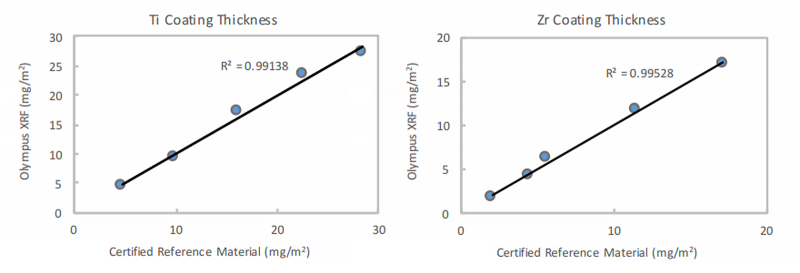In the fast-paced world of automotive engineering, every component plays a crucial role in ensuring the optimal performance, longevity, and safety of vehicles. One of the key materials for components in automotive manufacturing is aluminum. Known for its light weight and material strength, aluminum is used to make vehicles that are lighter, safer, and more fuel efficient.
Aluminum is also versatile. It comes in a range of alloys that offer unique mechanical properties, such as good formability and strength-to-weight ratio. Specific properties make certain aluminum alloys suitable for different automotive components, so a range of alloys are used throughout the vehicle to optimize performance.
On top of this, the right surface finishes and coatings give aluminum auto parts an extra layer of performance and protection. The right surface treatment on aluminum parts can enhance the aesthetic appeal, protect against corrosion, wear, and other environmental factors, or grant better formability.
With these factors in mind, the performance of the vehicle relies on using the correct material and coating for the correct part. While original equipment manufacturers (OEMs) follow a strict quality process, automotive manufacturers must confirm the integrity of incoming materials from OEM suppliers to ensure quality control and assurance. This includes verifying the coating thickness on aluminum OEM auto parts.
Here we explore the various types of aluminum finishes and coatings used in the automotive industry, highlighting their economical and physical advantages. Plus, learn about an efficient quality control device for aluminum coating thickness measurement and analysis.
4 Types of Aluminum Finishes and Coatings for Automotive Components
A variety of aluminum surface treatments and coating options are used on automotive components and parts. These include:
1. Anodizing
Anodizing is a popular surface treatment technique for aluminum OEM auto parts. It involves creating an oxide layer on the surface. This layer improves corrosion resistance and allows for color options. In addition, anodized aluminum offers durability, increased hardness, and excellent adhesion properties. These properties make it ideal for exterior body panels, wheels, and other visible components.
2. Non-chromate conversion coatings
Non-chromate conversion coatings provide a protective layer on aluminum surfaces, enhancing their resistance to corrosion. These coatings offer excellent adhesion for subsequent paint applications. They are widely used in critical applications like engine components and aerospace parts.
A Ti/Zr coating (a coating based on titanium and zirconium) is one of the most popular examples. It is formed by spraying a chemical agent for a Ti/Zr treatment and then rinsing and drying. Ti/Zr treatment is adopted by many automotive manufacturers, as it improves the bonding durability of aluminum materials for automobiles.
3. Powder coating
Powder coating involves applying a dry powder to the surface, which is then cured to form a protective and decorative layer. This process offers exceptional durability, resistance to chemicals, and a wide range of color options. Powder-coated aluminum parts can be found in various areas, including the chassis components and interior trim.
4. Electroplating
Electroplating is a process where a metal layer is deposited onto the aluminum surface through an electrolytic cell. This technique enhances corrosion resistance, provides a smooth finish, and can be used to achieve decorative effects. Electroplated aluminum parts are commonly used in exterior trims and decorative accents.
The pursuit of lightweight electric vehicles (EVs) has driven advancements in coating technologies. Research and development efforts have focused on creating coatings with improved corrosion resistance, durability, and weight-saving properties.
These advancements include nano-coatings, thin-film coatings, and advanced composite coatings, which can offer enhanced protection while minimizing weight gain. Such innovations align with the goal of reducing overall vehicle weight while providing optimal performance and protection.
Quality Matters: XRF Coating Thickness Measurement from Nanometers to Microns
For automotive engineers and manufacturers, ensuring consistent quality and adherence to specifications is crucial. One key aspect of quality control is accurately measuring the thickness of surface coatings.
In this regard, X-ray fluorescence (XRF) technology emerges as a reliable and efficient solution, even for samples with a sophisticated shape. XRF is a nondestructive analytical technique that measures the elemental composition of materials. It can also precisely determine the thickness of coatings on aluminum surfaces without damaging the part.

A technician performs coating analysis using a handheld XRF analyzer.
XRF is well-known technique with several benefits for coating thickness measurements:
Nondestructive testing: XRF technology measures the coating thickness without compromising the integrity and usability of the aluminum OEM parts.
Accuracy and precision: XRF analyzers provide highly accurate and repeatable coating thickness measurements, reducing the risk of deviations from specifications.

| Ti Coating Thickness | Zr Coating Thickness | ||
|---|---|---|---|
| Lab | XRF | Lab | XRF |
| 4.74 | 4.5262 | 1.94 | 1.6535 |
| 9.87 | 9.4366 | 4.47 | 4.1885 |
| 16.13 | 17.075 | 5.61 | 6.2165 |
| 22.67 | 23.5199 | 11.51 | 11.7935 |
| 28.36 | 27.2368 | 17.19 | 16.8635 |
The data above shows excellent correlation between the results obtained using a Vanta™ handheld XRF analyzer and the coating thickness reference materials for titanium (Ti) and zirconium (Zr).
Time and cost efficiency: XRF technology offers rapid measurements, minimizing downtime and increasing productivity. It eliminates the need for destructive testing or complex sample preparation, leading to cost savings.
Versatility: XRF analyzers can measure a wide range of coatings, including anodized layers, conversion coatings, and more, making them suitable for various automotive applications.
To see how XRF works to help ensure the quality of coating layers, watch the following video:
Introducing In-Line XRF for Quality 4.0 in Automotive Manufacturing
Sometimes, precise control over coating thickness at the nanoscale is required (one nanometer, or nm, equals one billionth of a meter). In the case of nano-thickness control, the consistency of the measurement procedure is important. Manual control can’t always provide an ideal procedure.
This is why we offer an automatic in-line control system that aligns with Quality 4.0 practices. A robot arm with an integrated in-line XRF analyzer can analyze control points in real time, providing 100% quality control of the surface treatment.
Confidence in Your Coating Quality for Aluminum Auto Parts
In the ever-evolving automotive industry, surface finishes and coatings are indispensable for enhancing the performance, protection, and visual appeal of aluminum OEM parts. Anodizing, chromate conversion coatings, powder coating, electroplating, and organic coatings all serve distinct purposes and contribute to the overall durability and functionality of automotive components. By carefully selecting the appropriate surface treatment, automotive engineers can ensure optimal performance, longevity, and customer satisfaction.
Remember, surface treatment and quality control go hand in hand when it comes to aluminum OEM parts in the automotive industry. By staying informed about the latest advancements in surface treatments and integrating leading-edge technologies like XRF, automotive engineers can drive innovation, elevate product performance, and achieve success in this dynamic industry.
Related Content
Portable X-Ray Fluorescence (XRF) for Non-Chromate Conversion Coatings
Video: DURA Automotive Uses Vanta Handheld XRF for Quality Control
Through Thick and Thin: Using XRF to Measure Coating Thickness


